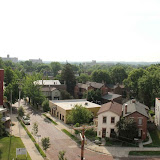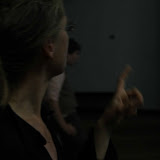 ANNOUNCING!! Where are you going Ray? - The Merc Building Interpretation
ANNOUNCING!! Where are you going Ray? - The Merc Building InterpretationThe Phasmatodea (sometimes called Phasmida) are an order of insects. The ordinal name is derived from the Ancient Greek phasma, meaning an apparition or phantom, and refers to the resemblance of many species to sticks or leaves. Their natural camouflage can make them extremely difficult to spot.
Friday, July 30, 2010
ANNOUNCING!! Where are you going Ray? - The Merc Building Interpretation
 ANNOUNCING!! Where are you going Ray? - The Merc Building Interpretation
ANNOUNCING!! Where are you going Ray? - The Merc Building InterpretationThursday, July 22, 2010
Wednesday, July 14, 2010
Hello PHASMID LAB followers!!
SPACE AND THEATRE: an intro to our team and interests
Thursday, July 8, 2010
Sunday, July 4, 2010
SPACES: we think and work in various spaces are interested in ways in which they are occupied and ways in which these spaces can be transformed. We dream of transformations and work on converting the dream into an illusion.
THEATER AND CINEMA: we are interested in the idea of theater and ask how we can expand this idea. In other words what is the idea of theater and can we insert the idea of theater in the spaces which we approach? How does this transform not only the space but also this idea of theater?
In my group I introduce a graduate level research to teen aged teem of very young artists. I put both sides myself and my team through this challenge purposely and ask what we can learn from this journey. So far my team proves absolutely brilliant and points me to directions I would have never imagined. I hope this works both ways!!
Thursday, July 1, 2010
National Museum of the US airforce, Dayton Ohio
SISTEEN CHAPLE

The Sistine Chapel ceiling, painted by Michelangelo between 1508 and 1512, at the commission of Pope Julius II, is one of the most renowned artworks of the High Renaissance. The ceiling is that of the large Papal Chapel built within the Vatican between 1477 and 1480 by Pope Sixtus IV after whom it is named the Sistine Chapel. The chapel is the location for Papal Conclaves and many important services.[1]
The ceiling's various painted elements comprise part of a larger scheme of decoration within the Sistine Chapel which includes the large fresco The Last Judgment on the sanctuary wall, also by Michelangelo, wall paintings by a team of the most highly regarded painters of the late 15th century including Botticelli and Perugino, and a set of large tapestries by Raphael, the whole illustrating much of the doctrine of the Catholic Church.[2][3]
Central to the ceiling decoration are nine scenes from the Book of Genesis of which the Creation of Adam is the best known, having an iconic standing equalled only by Leonardo da Vinci's Mona Lisa, the hands of God and Adam being reproduced in countless imitations.
The scenes, from the altar towards the main door, are ordered as follows:\
Nine scenes from the Book of Genesis
- The Separation of Light and Darkness
- The Creation of the Sun, Moon and Earth
- The Separation of Land and Water
- The Creation of Adam
- The Creation of Eve
- The Temptation and Expulsion
- The Sacrifice of Noah
- The Great Flood
- The Drunkenness of Noah
Tuesday, June 29, 2010
Monday, June 28, 2010
BLUE SKY

Sunday, June 27, 2010
LATERNA MAGIKA















































